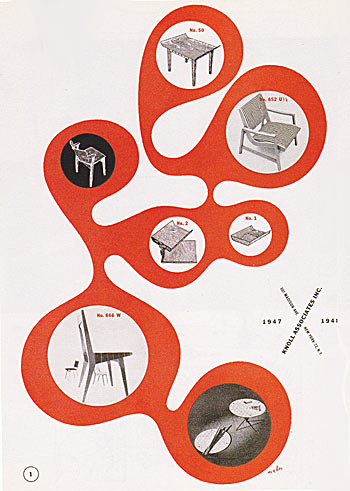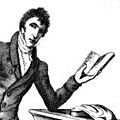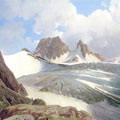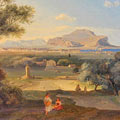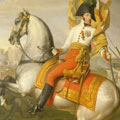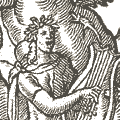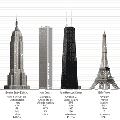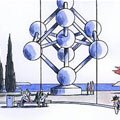samengesteld door Brooke Kamin Rapaport en Kevin L. Stayton
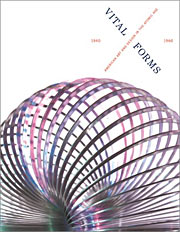 Tien jaar geleden was in het Brooklyn Museum of Art een tentoonstelling te zien over Amerikaanse kunst en vormgeving tussen 1940 en 1960. Afgelopen week kocht ik de tentoonstellingscatalogus. De grafisch vormgever in mij springt altijd op bij vormgeving uit de jaren veertig, vijftig en zestig. Geregeld baan ik mij een weg door het world wide web met zoektermen als ‘retro’, ‘mid century modern’ of ‘atomic age design’.
Tien jaar geleden was in het Brooklyn Museum of Art een tentoonstelling te zien over Amerikaanse kunst en vormgeving tussen 1940 en 1960. Afgelopen week kocht ik de tentoonstellingscatalogus. De grafisch vormgever in mij springt altijd op bij vormgeving uit de jaren veertig, vijftig en zestig. Geregeld baan ik mij een weg door het world wide web met zoektermen als ‘retro’, ‘mid century modern’ of ‘atomic age design’.
Bij een eerste ronde langs de vele afbeeldingen van deze catalogus, viel mij weer eens op dat er na de Tweede Wereldoorlog vanuit Amerika een nieuwe geest was gaan waaien die overal in tot uitdrukking wilde komen. In het abstract expressionisme van de Amerikaanse avant-garde, in de vormgeving van auto’s, stoelen en lampen, in de grafische vormgeving en in de architectuur. De vormtaal van de nieuwe stijl, die soms ‘atoomstijl’ wordt genoemd, is organisch en vaak worden er zachte kleuren gebruikt.
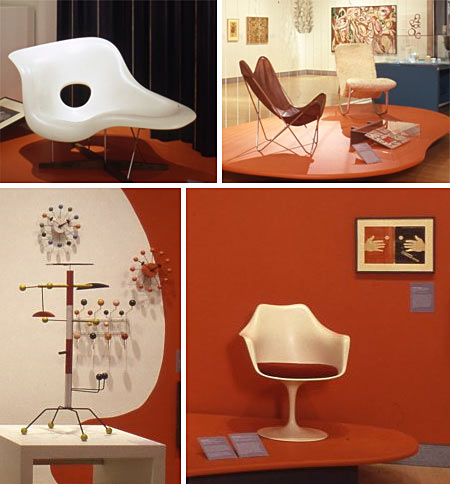
in het Brooklyn Museum of Art (2001-2002)
In veel opzichten is de atoomstijl tegengesteld aan de stijl van het Bauhaus of De Stijl uit het interbellum. De strenge hoeken en de harde kleuren hebben plaats gemaakt voor organische en fantasierijke vormen. Vital Forms is de toepasselijke naam van de tentoonstelling uit 2001-2002. Net als het strenge modernisme van Mondriaan en Mies van der Rohe, is de atoomstijl gericht op het elementaire en abstraherende, maar het gedraagt zich speelser.
Deze stijl is meer geïnspireerd door de weke vormen van het vooroorlogse surrealisme dan door de hoekige abstractie van het constructivisme. Het surrealisme duikt onder de oppervlakte en ontsluit de ‘onderwaterwereld’ van onze psyche. Deze lijkt soms letterlijk op een onderwaterwereld waarin weke vormen langzaam zweven en ronddraaien. Bij de surrealistische kunstenaars Jean Arp en Juan Miró komt deze wereld in de jaren twintig al in beeld.
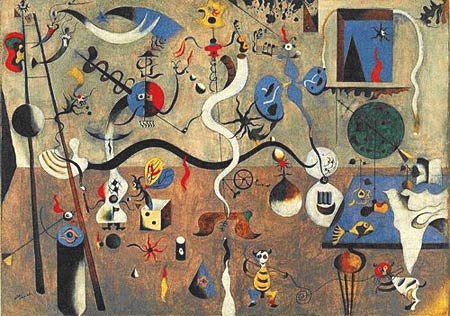
Het carnaval van Harlekijn
Another source of the postwar turn to organic art and design lay in the theory of vitalism, according to which all living things possess a life force or essence. In the philosophy of Henri Bergson, the life force or élan vital can be sensed, but not understood intellectually one intuits the force that sets apart living from nonliving matter. Sir Herbert Read wrote that the sculptor must reverse the process of the natural world and discover or represent the vital force concealed within his material. Abstract expressionist Jackson Pollock described it another way: the painter must release the life in a painting.
Bron: neh.gov
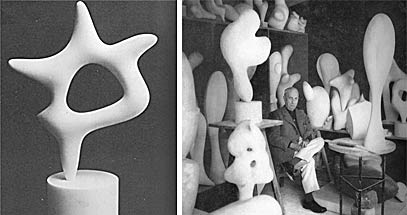
Kevin L. Stayton
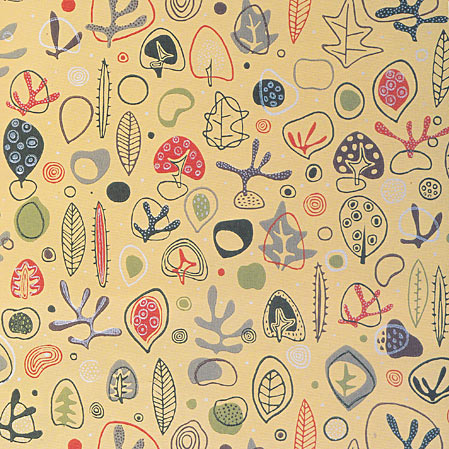
This is the first exhibition to include all of the visual arts that made use of organic forms in the 1940s and 1950s and to examine their relationship to the period in which they were created. Among the historical events that influenced the art and design of these two decades were World War II, the Holocaust, the immigration from Europe of an extraordinary number of artists and designers, the dropping of the atomic bomb, followed by the Korean war, McCarthyism, and the prosperity and conformity of the 1950s.
Bron: brooklynmuseum.org
